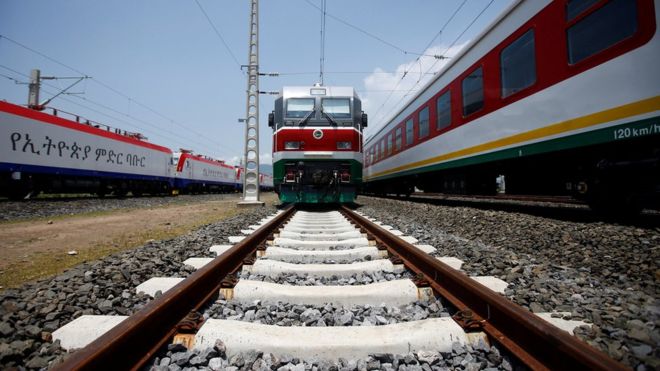The railway industry, one of the oldest transportation industries, is continuously evolving thanks to advancements in technology and engineering. According to World Steel Association’s recently published infographic, the total length of railways worldwide spans 1,055,263 km – enough steel rails to cover more than 2.7 times the distance to the moon.
Of these many railways across the globe, which are becoming bigger, faster and longer today, The Steel Wire explores two recently established railway systems that opened limitless opportunities for the countries they connect.
The World’s Longest Tunnel Through the Alps
The world’s longest and deepest train tunnel officially opened in December 2016, after nearly two decades and USD 12.5 billion worth of construction work in Switzerland. The new 35-mile or nearly 57km tunnel was designed to replace the previous tunnel, which had limited train speed and cargo capacity as it would wind up, down and around the Alps.
The Gotthard Base Tunnel (GBT), which can carry passengers deep under the Swiss Alps from Zurich to Lugano, has been praised across Europe for improving connectivity from Rotterdam to the Adriatic and revolutionizing European freight and passenger transportation. The almost perfectly flat pass allows high-speed passenger trains and heavy freight trains with twice the cargo to race through up to 155 mph. The efficiency and reliability of rail freight traffic and increased transport capacity of the route will allow as many as 260 freight trains to pass through the GBT every day (the maximum number was 180 for the previous mountain route).

The Gotthard Base Tunnel (GBT) in Switzerland, the first flat route through the Alps (Source: Zacharie Grossen)
The GBT was deemed one of the biggest engineering feats in Swiss history. The Alps have always posed an obstacle to trains traveling between the North Sea and the Mediterranean due to zones of stone that had been crushed to bits as the Alps formed. Throughout construction, project engineers were constantly battling the pressure from the Alps and the humidity inside the tunnel.
So how were they able to dig the longest tunnel ever, perfectly level, through the base of the Alps?
In order to keep the pressure of the Alps from crushing the tunnel, specially designed steel reinforcements were used for tunnels and flexible beams that had moving parts held together with clasps. Ventilation was of the utmost importance for the project engineers to fight close to 100 percent humidity and 115 degrees Fahrenheit temperatures. Nine-mile long ventilation tunnels were designed to bring fresh air into the tunnel.
This behind-the scenes video provides an immersive 360-degree look into the tremendous amount of work that’s been put into building the GBT.
The tunnel has overtaken Japan’s 53.9km Seikan rail tunnel as the longest in the world and pushed the 50.5km Channel Tunnel linking the UK and France into third place. This new world record may not last long though as China has recently announced plans to link the northern port cities of Dalian and Yantai under the Bohai Strait with a railroad that is an estimated 76 miles (123km) long.
Chinese-funded Railways Linking East Africa
Another recently completed railway project is the Chinese-backed electric railway across Africa, which officially began operation in October 2016. The electrified and environmentally friendly project will replace the previous, diesel-powered Addis Ababa-Djibouti line.
The project was initiated when a pre-feasibility study conducted in 2007 showed the importance of renovating the line from an economic and financial perspective. This 466-mile or 750 km long tunnel is expected to cut travel time between the Ethiopian capital Addis Ababa and the port in Djibouti from three days by road to 12 hours by rail. The express line will also help optimize trade by giving businesses and passengers a cheaper and safer alternative to the notoriously dangerous trip between the two cities that are often clogged with cargo trucks.

Africa’s first fully electrified cross-border railway connecting Ethiopia and Djibouti (Source: AFP)
According to Transport CS James Macharia, “The laying of the tracks in itself will have a huge impact on the GDP even before completion of the project. Local businesses are expected to contribute up to 40 percent of all supplies whilst more than 50,000 Kenyans will be employed either directly or indirectly by the project.”
The USD 4 billion project was built by China Railway Group and the China Civil Engineering Construction Corporation and partly financed by Chinese banks. Why did China see the railway as an investment opportunity?
China has provided about USD 12 billion in loans to Ethiopia since 2000, and is Ethiopia’s main trading partner for exports and imports. The railway construction will not only reduce the cost of doing business but will further create an export market for China’s booming steel and construction industries. According to Deborah Brautigam, professor of international political economy and director of SAIS-CARI, “They have overcapacity in China. They have steel that they want to use. They’ve got experienced companies that know how to build railways.”
These recently built railway systems show just how far reaching railway innovation and engineering have become. The world today would be unimaginable without these advancements. What other industries and businesses are next to evolve thanks to railway innovation?
